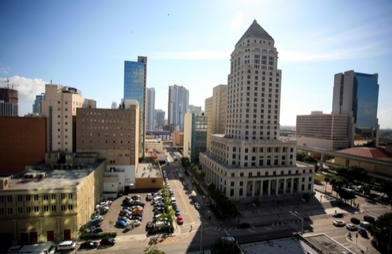The construction of a new Miami-Dade civil courthouse — such an “emergency”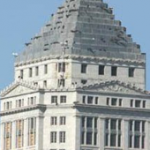 in 2014, that leaders, lawyers and lobbyists rushed a ballot question for a courthouse tax that was soundly defeated at the polls (64%-36%) — is back on the horizon.
in 2014, that leaders, lawyers and lobbyists rushed a ballot question for a courthouse tax that was soundly defeated at the polls (64%-36%) — is back on the horizon.
More than two years later, county commissioners Thursday again looked to address the deterioration of the historic downtown building, known as Cielito Lindo, and the construction of a replacement courthouse. The Chairman’s policy council discussed different potential funding sources and heard from Chief Civil Court Judge Bertila Soto, who has been the lead proponent of a 600-square-foot facility with 60 courtrooms.
There have been two task forces studying the building at 73 West Flagler and the county has spent about $39 million on repairs so far, including $25 million on the facade. But Soto said that there are still $73 million in unfunded repairs that are needed. Where do they get these numbers?
Read related story: Commission approves courthouse fixes, P3 task force
“Our needs at the courthouse are well established,” Soto told the eight-member board, reminding them of not one, but two task force reports on the conditions with recommendations for its fix. “The courthouse needs to be replaced. The building needs to be 600 square feet.”
Commissioner Rebeca Sosa asked if it wouldn’t be better to have satellite courtrooms across the county to cut down on transit and make it more accessible to the users, the constituency. But Soto said that both task forces had come to the same conclusion that one building was a better option. She explained that having satellite courts for criminal and 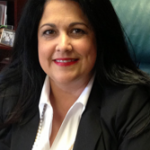 traffic cases worked because it was just the affected party accessing the court.
traffic cases worked because it was just the affected party accessing the court.
“But when you are talking about civil court, the plaintiff might be from Homestead and the respondent from North Miami,” Soto said. “We try misdemeanors and some cases locally, but for circuit, civil and probate cases, it’s different.”
But, she added, they have looked at satellite courthouses that have some space — like the one in South Dade — and they could be used more with the right technology for the meetings that lead up to trials.
What’s at stake, she added, is the health of the more than one million people who go through the doors of the Flagler building every year. “We have judges with upper respiratory conditions. People with eye conditions.”
Read related story: Courthouse tax debate — scare tactics vs. common sense
Really? Then why on Earth hasn’t this been addressed in the two years since a tax to pay for it was shot down by voters? It was an “emergency” two years ago — remember the ominous ads and the talk about mold and unhealthy conditions? — and people are still getting sick? Oh, yeah, guess there was a mayoral election in the way. Commission Chairman Esteban Bovo said at the beginning of the meeting that he doesn’t want to kick the can down the line. But where has he been for the past two years while judges develop respiratory conditions?
“We don’t care who builds this building. We don’t care how it’s built,” Soto said. But Ladra is a bit concerned that our chief judge would be so flippant about such a major capital improvement project and the opportunity that exists for graft. 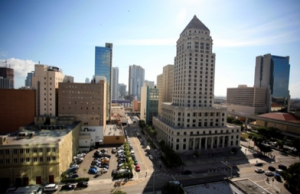 What if the mayor’s son’s construction firm gets to build it? She certainly should care, shouldn’t she?
What if the mayor’s son’s construction firm gets to build it? She certainly should care, shouldn’t she?
Tara Smith of the county’s Internal Services department (read: procurement) said staff had identified 11 downtown sites — county-owned and underutilized assets — where, plausibly, a courthouse could be built. She said these are sites where the county is actively considering “for potential development” of the courthouse.
Really?
Toppping the list is the current location, though Ladra doubts they would be able to tear down the historic 1928 structure. Besides, selling the building is also being considered as a potential funding source for the new courthouse (couldn’t we enter into a development agreement instead and still own it?). Deputy Mayor Ed Marquez said there has been some interest in “converting the old courthouse into a boutique hotel.”
Other sites identified include the cultural center where the Main Library and our historical museum are located, the downtown motor pool and lot, and the little plaza/park with public art just north and west of County Hall. All three of those were vetoed by commissioners.
“Green space right now is prime in downtown,” said Commissioner Bruno Barreiro. “For me, that’s sacred.”
And Audrey Edmonson said the one lot in Overtown near the historic Lyric Theater was off limits, too.
“We have plans for that. Take that one off,” she said.
Read related story: Courthouse clean bill of health begs questions, investigation
Later in the day, several County Hall insiders said that there are issues to take off most if not all the sites identified. One source said the list was “laughable.” But the property that is adjacent to the new juvenile courthouse and contiguous to the FEC line, which is apparently Commissioner Sally Heyman‘s favorite spot.
Several commissioners also wondered if this would be a good project for a public-private partnership (duh) and if they should put out feelers to private land owners in the downtown core. Commissioner Dennis Moss , who said he had also talked to the boutique hotel people, said this was a “tremendous opportunity” to use some of those county assets, perhaps along with private parcels, to “really create a new direction for the downtown area.
“If we do this right we have a chance to create something really special,” he said.
Edmonson thought that perhaps getting a footprint with both public and private land could work. Smith told the council that she would come back in 90 days with a cost analysis of using the identified properties for the courthouse and going with a P3 process or a traditional build/design bid.
“There are a lot of rumors out there about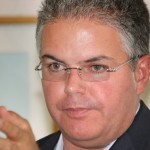 interests in the private sector,” Barreiro said. “Before we go into one of our own public assets and spend money on a study, let’s see if a private entity comes forward.”
interests in the private sector,” Barreiro said. “Before we go into one of our own public assets and spend money on a study, let’s see if a private entity comes forward.”
Heyman said that there was interest from private property owners and they would be reached out to.
Smith said the county assets were identified first because there has been no funding identified for the project. “But that doesn’t exclude private properties.”
Commissioners decided to seek some input from the Downtown Development Authority at its next meeting.
“At least we were able to at least set the table on this,” Bovo said.
But nobody ever talked about the dinner bill, or funding for construction of any new courthouse. Obviously, going to the taxpayers again is not a good idea and, luckily, Bovo realized that.
Read related story: Top 5 reasons to vote no on courthouse bond tax
“The voters already opined on the issue,” he said. “I’m hoping that we guide ourselves in a way that does not rely on a bond issue. I think that would probably be dead on arrival.”
Heyman also said they were not considering asking voters to approve another general obligation bond.
Government affairs consultant and lobbyist Al Maloof told the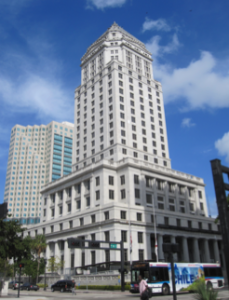 council that his office was involved with a bill filed in Tallahassee this week that would provide a funding mechanism for coutrhouses, libraries, schools, jails and prisons. It is likely a companion bill to federal legislation known as the Public Buildings Renewal Act that allow state and local governments to establish P3s for infrastructure improvements through the creation of at least $5 billion in new private activity bonds for public buildings.
council that his office was involved with a bill filed in Tallahassee this week that would provide a funding mechanism for coutrhouses, libraries, schools, jails and prisons. It is likely a companion bill to federal legislation known as the Public Buildings Renewal Act that allow state and local governments to establish P3s for infrastructure improvements through the creation of at least $5 billion in new private activity bonds for public buildings.
Isn’t that still public money?
Because you know it’s going to be expensive. What was going to cost $390 million in 2014 is going to be more than $450 million when all is said and done. Mark my words.
Commissioner Jean Monestime wants it to be an inviting space that becomes a city center for a downtown with a growing residential community. A plae for people to meet and have a conversation.
“Our County Hall is not inviting. Our cultural center is not inviting,” Monestime said. “People come here because they have to, not because they want to. Nobody says, ‘Let’s go for a walk to the square.'”
So, we’re talking about a public square, too?
Ka-ching.
“It ought to be spectacular,” said Commissioner Javier Souto. “Showing to the world what Miami-Dade County is.”
Ka-ching.
“All around for acres and acres, it should be spectacular.”
Ka-ching, ka-ching.

